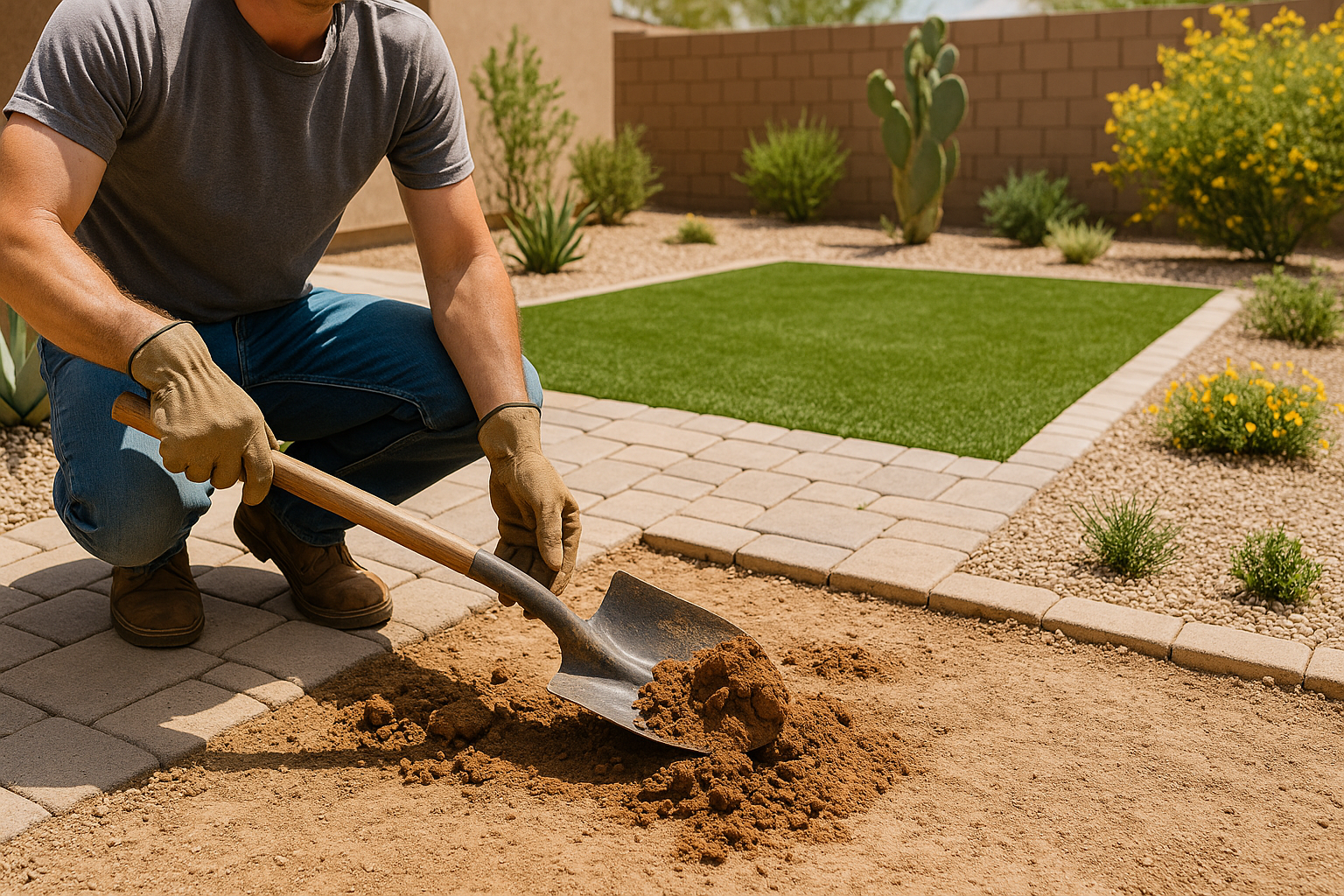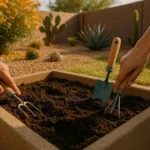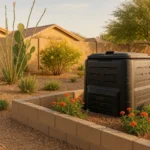Clay soil, a common challenge for gardeners in Gilbert, can be tough to handle. It sticks to your tools, forms clods that are hard to break up, and makes it difficult for plant roots to penetrate. But don’t fret! I’m Sofia Vargas, your local raised beds expert, and I’m here to help you find easy solutions to break up that stubborn clay soil without breaking your back.

Understanding Clay Soil
Clay soil is composed of extremely fine particles that stick together, creating a dense, heavy texture. While it’s rich in nutrients, its compact nature makes it hard for roots to grow and water to drain. In Gilbert and the Southeast Valley, our desert environment often leads to soils with a high clay content, presenting a unique challenge for gardeners.
Fortunately, there are a number of ways to improve clay soil, making it more workable and conducive to plant growth. By following a few simple steps, you can transform your garden’s clay soil into a fertile, well-draining growing medium.
Start with Organic Matter
The most effective way to break up clay soil is by adding organic matter. Organic matter, such as compost or well-rotted manure, improves the soil’s structure, making it easier to work with. It also increases the soil’s ability to retain nutrients and moisture, providing a better environment for plant roots.
Spread a 2-3 inch layer of compost or manure over the top of your soil, and then work it in with a garden fork or tiller. The organic matter will break up the clay, improving its texture and drainage. For best results, do this in the fall, so the organic matter has time to break down over the winter.
DIY Tip: Don’t have access to compost or well-rotted manure? You can also use leaf mold, grass clippings, or straw to add organic matter to your soil. Just make sure to break it up into small pieces before adding it to your garden.
Use Gypsum
Gypsum, also known as calcium sulfate, is another excellent amendment for clay soil. It works by replacing the sodium in the soil with calcium, which helps to loosen up the clay particles. This makes the soil easier to work with and improves its drainage.
You can find gypsum at most garden centers or online. To apply it, simply spread it evenly over your soil and then water it in. You’ll start to see improvements in your soil’s texture within a few weeks. Remember, though, that gypsum is not a quick fix. It works slowly over time, so you’ll need to be patient.
DIY Tip: Test your soil’s pH before adding gypsum. Gypsum is most effective in soils with a pH between 6 and 7. If your soil’s pH is outside this range, you’ll need to adjust it before adding gypsum.
Grow Green Manure
Green manure crops, such as clover, rye, and vetch, are excellent for improving clay soil. These plants have deep roots that help to break up the soil, and when they’re dug back into the soil, they add valuable organic matter.
To use green manure, sow the seeds in the fall or spring, depending on the crop. Once the plants are fully grown, cut them down before they start to flower and dig them back into the soil. The plants will decompose, adding nutrients and organic matter to the soil and improving its structure.
DIY Tip: If you’re short on time or don’t want to dig, you can also mow your green manure crops and leave the clippings on the soil surface. They’ll break down and add organic matter to your soil just like compost.
Final Thoughts
While dealing with clay soil can be challenging, it’s not impossible. With a little patience and the right amendments, you can transform your clay soil into a rich, fertile growing medium. And the best part? You don’t have to break your back doing it. So, roll up your sleeves and get started. Your plants will thank you!






